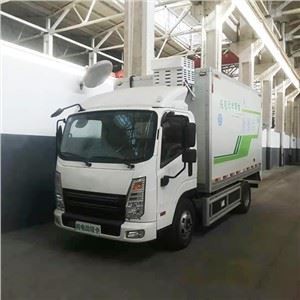How Much Does a Concrete Truck Weigh? A Comprehensive Guide
Concrete trucks play a critical role in construction projects, transporting vital materials to job sites. Understanding the weight of these vehicles is essential for logistics, parking, and safety. In this article, we’ll explore everything you need to know about concrete truck weights, including the factors affecting their weight, types of concrete trucks, and practical tips for managing concrete truck logistics on-site.

Understanding Concrete Truck Weight
The weight of a concrete truck is a critical factor that influences many aspects of a construction project. From planning and assessment to transportation and compliance with regulations, knowing how much a concrete truck weighs can prevent various issues.
What is the Average Weight of a Concrete Truck?
On average, a fully loaded concrete truck can weigh between 20,000 to 40,000 pounds (9,072 to 18,144 kg). The actual weight depends on several factors, which are outlined in the following sections.
Different Types of Concrete Trucks
| Type of Concrete Truck | Average Weight (Empty) | Average Weight (Loaded) |
|---|---|---|
| Standard Transit Mixer | 25,000 lbs (11,340 kg) | 40,000 lbs (18,144 kg) |
| Ready-Mix Truck | 30,000 lbs (13,607 kg) | 45,000 lbs (20,412 kg) |
| Volumetric Mixer | 28,000 lbs (12,701 kg) | 42,000 lbs (19,051 kg) |
| Concrete Pump Truck | 40,000 lbs (18,144 kg) | 60,000 lbs (27,216 kg) |
Factors Influencing Weight
Several factors can affect the weight of a concrete truck, including:
1. Size and Capacity
The size of the truck and its capacity to hold concrete significantly influence its weight. Larger trucks can accommodate more concrete, which increases their overall weight.
2. Type of Concrete
Different types of concrete have varying densities. For example, lightweight concrete will reduce the overall weight of the load, while heavy-duty concrete may increase it.
3. Truck Configuration
The configuration of the truck (e.g., axle count, wheelbase) affects its structure and weight. Trucks with more axles typically weigh more but can carry heavier loads legally.
4. Equipment and Accessories
Additional equipment such as pumps, chutes, and mixers can add extra weight. A concrete pump truck, which has advanced pumping equipment, typically weighs more than a standard concrete mixer.
5. Water Content
The water-to-cement ratio in the concrete mix plays a crucial role. Higher water content can lead to heavier concrete loads, thus increasing the truck’s weight.
6. Regulatory Compliance
Trucks must comply with weight regulations that vary by state and location, often leading to adjustments in the amount of concrete transported at any given time.
Types of Concrete Trucks and Their Uses
Concrete trucks come in various forms, each tailored for specific uses in the industry.
1. Standard Transit Mixers

Transit mixer trucks are equipped with a rotating drum that helps mix the concrete during transportation. These trucks are commonly used for delivering ready-mix concrete at construction sites.
2. Ready-Mix Trucks
Ready-mix concrete trucks are designed for delivering pre-mixed concrete to construction sites. They ensure that the concrete remains wet throughout the transit period.
3. Volumetric Mixers
Volumetric mixers can mix concrete on-site, allowing for customized concrete mixes. These trucks are beneficial for projects that require variable concrete types.
4. Concrete Pump Trucks
Concrete pump trucks are equipped with a pump mechanism that transports concrete through pipes to hard-to-reach areas. They are especially useful for large construction projects where vertical placement is necessary.
Logistics and Weight Management
Managing the weight of concrete trucks effectively ensures safety and compliance in a construction project.
1. Planning Deliveries
Always plan for concrete deliveries by calculating how much concrete will be needed, considering the truck’s weight capacity and ensuring trucks do not exceed road weight limits.

2. Use Weight Stations
Installing weight stations on-site can help monitor the weight of incoming trucks. This process helps avoid potential fines for overweight trucks while ensuring safe operations.
3. Optimize Concrete Mixes
By optimizing concrete mixes for specific projects, contractors can manage overall weight more effectively. Consider the use of lightweight aggregates when possible.
4. Employ Efficient Routing
Efficient routing for concrete trucks minimizes travel times, reducing the risk of exceeding weight limits due to potential delays and extended transportation periods.
Safety Considerations
Understanding the weight of concrete trucks is vital for ensuring safety at construction sites.
1. Overloading Risks
Overloading concrete trucks can lead to severe safety hazards, including accidents or structural failures. Be aware of state and local weight regulations to avoid penalties.
2. Preparing for Weight Limits
Always prepare for weight limit restrictions on roads, bridges, and construction sites. Knowing these limits beforehand avoids unnecessary complications.
3. Training Operators
Don’t forget to train truck operators on weight management, load balancing, and safe driving practices to prevent accidents.
4. Regular Maintenance
Conduct regular maintenance on concrete trucks to ensure safety features (like brakes and tires) are functioning properly, particularly due to the added wear from heavy loads.
Practical Examples of Weight Management
Here are a few real-world examples to bring the terms outlined in this article into practice.
Example 1: A Residential Construction Project
For a simple residential project requiring 10 cubic yards of concrete:
- 1 cubic yard of concrete weighs approximately 4,000 lbs.
- Total weight of concrete = 10 cubic yards x 4,000 lbs/cubic yard = 40,000 lbs.
- A standard transit mixer truck can carry this load as long as the truck’s empty weight (around 25,000 lbs.) is considered. Therefore, the total weight during the delivery would be approximately 65,000 lbs.
Example 2: A Commercial Concrete Pour
In a larger commercial project, suppose you need 30 cubic yards of concrete:
- Total weight = 30 cubic yards x 4,000 lbs/cubic yard = 120,000 lbs.
- Using two ready-mix trucks, each carrying 60,000 lbs (30,000 lbs empty weight + 30,000 lbs load) ensures compliance with most road limits.
Frequently Asked Questions (FAQs)
1. What is the weight of an empty concrete truck?
An empty concrete truck usually weighs between 25,000 to 30,000 lbs (11,340 to 13,607 kg) depending on the type and configuration.
2. Are there weight limits for concrete trucks on roads?
Yes, weight limits for concrete trucks vary by state, typically ranging from 80,000 lbs (36,287 kg) for standard highways. Always check local regulations.
3. How do you determine the weight of a concrete truck?
The weight of a concrete truck can be determined by adding the weight of the empty truck to the weight of the concrete it carries. You can also weigh the truck at a certified weigh station.
4. Can overweight trucks cause damage to roads?
Yes, overweight trucks can damage road surfaces, leading to costly repairs and increased maintenance needs, not to mention potential safety hazards.
5. How can I ensure my concrete deliveries are timely and compliant?
Plan deliveries in advance, optimize routes, and ensure all trucks are compliant with weight regulations to make timely and compliant deliveries.
6. What should I do if my truck exceeds weight limits?
If your truck exceeds weight limits, consider redistributing the load, reducing the concrete amount, or using multiple trips to comply with regulations.
